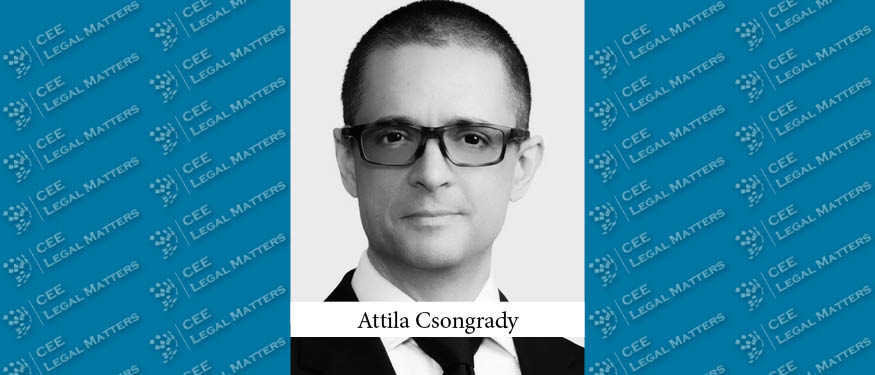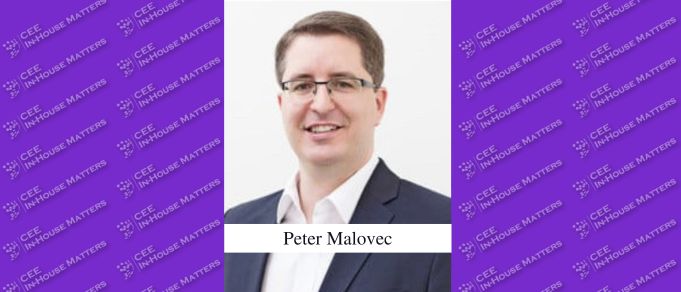On June 15, 2021, Hungary passed legislation that bans the dissemination of content in schools deemed to promote homosexuality and gender change. Dubbed by many as simply the “Anti-LGBTQ+ Law,” it has wide-ranging implications – even leaving social issues / social impact aside. CEE Legal Matters spoke with several Hungarian lawyers to discuss the law’s business implications and the impact it had on law firms’ work.
From Original Intentions to Vague End Result
“In its original form, the law was meant to help prevent instances of pedophilia more effectively,” says Szecskay Attorneys at Law Partner and Head of Competition Aniko Keller, noting that, “for example, it introduced new measures such as registering offenders and the like.” During the legislative process, “several amendments were proposed to the original draft, which made it into the bill that was finally adopted. Based on these, new restrictions on advertising and commercial communications have been introduced and need to be taken into account by media outlets and content providers.” Baker McKenzie Counsel and Head of Intellectual Property Zsofia Lendvai explains that the law is a lot like “salad legislation,” in that it deals with and amends a lot of different laws. “The pedophilia section is amending criminal law. In addition, the legislation amends the Media Act and the Child Protection Act as well. And through the Media Act, advertising law has also changed.”
Wolf Theiss Partner Janos Toth agrees that “the new law is causing some amount of turbulence for media and content owners, in particular, and generally for quite a number of other businesses”. He says that, while the Government’s formal position is that the law isn’t against something – but rather in the interest of protecting minors and supporting parents’ rights on how children are educated on sexual orientation – it would be a fair assessment that “official communication on the law and the law’s actual effects on business decisions and private life day-to-day decisions are not aligned.”
“The most interesting yet problematic issue is interpreting the law,” says Ivan Solyom, Partner with Lakatos, Koves & Partners, pointing out that “it has a broad and generic wording, so it would be difficult for someone trying to comply to understand exactly how to do that.” The law’s ambiguities stem from the fact that it was not written with a view on implementation, he adds: “it was not drafted in a way that is ready to apply. So the media authority and the courts will have the difficult task of filling in the blanks and creating case law.” Lendvai agrees that “the law will be clarified through it being enforced. So it’s still up in the air. We still don’t know how the competent authorities and, in case of judicial review, the courts will interpret the concepts of ‘content’, ‘display’ and ‘promotion’.”
Keller points to another aspect that is unclear at the moment: “the legislation sets forth that when classifying programs, the only problematic content is that where portrayals of deviations from the gender at birth, gender transitioning, or homosexuality are ‘significant’ to the content, but it is really difficult to tell what is ‘significant’ to the content.” This aspect, in particular, has led to a lot of public debate over how this new legislation is to be applied and “a clarification should definitely be provided by the regulator.”
While Toth agrees that “the law itself does not include all the detailed rules and expectations of the Government, and subsequent implementation regulations were expected to set out those details,” he notes that the first implementation regulation was painfully lagging behind the law, and that the Government came up with that on August 6, 2021 (almost two months after the law was passed). According to Lendvai, some of the clarifications provided in the form of implementation guidelines published in a Governmental Decree included, for instance, an obligation to wrap books, magazines, or newspapers so they are not opened by children (if said materials included content deemed problematic under the law).
“Those more detailed implementation rules are still not sufficient, according to market players, to guide them on how to behave going forward. There are still a lot of questions around the practical workings of the law,” says Toth, adding that publishers are “still puzzled on how to identify artistic elements that may be contrary to the law,” and noting that even the Bible could fall under the law’s purview. It would in effect mean that Bibles would have to be sold with 18+ markings and in closed packaging (not to be opened in the bookstore), but that would be under an extreme reading of the law. He mentions other less extreme examples, like the more recent inclusive and diverse children’s books or those with an educational focus – general children’s tales books that have elements that could be considered contrary to this law. Toth says it would even be difficult to draw the line on, for example, whether some of Andersen’s famous tales would be allowed. “Art is about free and novel forms of expression – but a lot of art pieces could be brought under the scope of the law.”
According to Lendvai, one particularly interesting case to look out for will be the test of Elle magazine’s three covers for the September issue (each featuring either a male couple, a female couple, or a heterosexual couple). According to her, the way the magazine will be available at newsstands (or not) will serve as an interesting case study on the law’s application going forward.
There is still a wait-and-see approach at this point, with Toth unsure “if the Government is prepared to have further amendments on the law itself, which the market seems to demand.” He also points out some other issues the law has indirectly raised: discussions on the national educational agenda in Hungary – mandatory readings (according to level or grade) that contain Hungarian books, some of which would not fit the spirit or the letter of the law. He raises the question: “How would the Government go forward – change the educational agenda to be in full compliance by removing those mandatory readings?” He adds that the Government not taking these corrective steps itself “creates a feeling that the law targets certain content owners or publisher groups, while schools still have books or art with similarly problematic content that is required teaching for children.”
Content and Advertising Considerations
According to Keller, the new restrictions “basically mean that it is now prohibited to put forward to people under the age of 18 content that depicts sexuality for its own purposes, or content that depicts or promotes deviations from the gender at birth, gender transitioning, and/or homosexuality.” At the same time, according to her, when the above elements are significant to the content, said content needs to be classified appropriately – as ‘not recommended for people under 18’. Solyom says that “media companies are probably having difficulty categorizing their programs and movies. Anything depicting homosexuality or promoting sex change should be Category 5 and only shown after 11 p.m. But deciding exactly which content falls into that category – that’s what’s likely giving the media companies, and their legal departments, headaches.”
Lendvai notes that the law’s provisions relating to homosexuality are short and can be summarized as: “It is not allowed to display LGBTQ+ content or content that promotes LGBTQ+ values to children.” She says her firm’s clients were specifically interested in understanding “the interpretation of ‘LGBTQ+ content.’ What that content includes, what it would mean to promote homosexuality and sexual orientation. Is it specific content dealing with LGBTQ+ issues – or would the interpretation be broader and go further?”
She also points to a new “big challenge to media content providers – advertisements must be age-rated as well – while they were explicitly exempted from age-rating before.” Keller explains that the same procedure on classifying content is to be applied to classifying adverts. “What is not particularly clear at this point is if every single advert needs to be classified, within a block, or the block as a whole does.” She says that, for now, the safe approach is the latter. “This is why, if you see a simple advert for a dishwasher classified as content for persons 18 and above, you might wonder why it’s marked as such – it’s because the block as a whole is.” Toth agrees on that strategy: the most immediate effect is that before each commercial block during the day broadcasters elect to deliver the message that commercials might not be suitable for children under the age of 12. “And then one finds out that those commercials would be harmless ones that have no content relevant under the law. But out of cautiousness the media groups will not want to run the risk. They will just slap the banner on the screen as a precautionary defense mechanism.” Unfortunately, “at the moment, there are no official guidelines from the National Media and Infocommunications Authority (NMHH) on how to do these classifications in practice,” Keller concludes.
The Work Generated
So how has this impacted the actual pipeline of lawyers and law firms in Hungary? “There has absolutely been a spike in work as a result of this legislation,” Keller says off the bat. Lendvai echoes this: “We have had a lot of work coming from this. We have been advising many global media and content providers. We’re having daily conversations at this point.” In particular, she says they had to advise clients on “what the law actually means and on what the implications are for the services and content they are providing and products they are selling in Hungary.” On the other hand, Solyom says he didn’t necessarily notice an increased workload connected to the new law, as his clients are active in the general TMT sector, and he is not assisting any media companies on a day-to-day basis.
In terms of who’s been knocking on their door, Keller first mentions the most obvious types of organizations impacted – traditional media service providers. Toth too points to a US media conglomerate that requested help in interpreting how they are supposed to change their local practices. On media outlets, Lendvai mentions that “The important distinction would be whether the media provider is established in Hungary or not. Those that are, have to comply with Hungarian media law. But if they are based outside Hungary, they would, according to the country-of-origin principle, have to comply with the law of their place of establishment. In principle, Hungary could try to enforce the law on the outside media entity, but it would have to demonstrate to EU institutions that the media company’s conduct runs contrary to public order laws.”
While Keller notes that traditional media service providers are especially afraid of this piece of legislation and what it means, she also points to platforms with user-generated content, where the liability of the video-sharing platform was brought into question. In these instances, she explains that the burden of categorizing content to protect minors applies, similarly to what was done for other restrictions in the past. Solyom mentions that, in general terms, the law would not apply to on-demand or streaming services and would only affect linear service providers (like television stations). But he agrees that certain restrictions also apply to social media and online content and notes that here “we’ve seen examples of people/providers being overly cautious and already introducing new filters.”
But other types of agents had their concerns as well, with “this law having much deeper effects on a wide spectrum of business and everyday life,” according to Toth, who mentions effects on bookstores, broadcasters, advertisers, mobile communications, and even education. One such example is that of educational software providers, according to him: “Hungary has been at the forefront of this sector and we’ve had quite a few success stories of Hungarian start-ups going international in the field – and that was all before the pandemic, which further accelerated their growth. They now face a situation where their standard products, successfully sold throughout the world, might not really fit with the local requirements in their home country.”
And this has been relevant beyond a digital space, with Toth also giving the example of a major designer fashion brand which, he explains, “tends to be aligned with the LGBTQ+ community. They are quite worried about how to carefully interpret what the law expects from them – even in terms of using various prints and various cuts in their design.”
Perhaps even less expected, ESG considerations started coming up. For example, Toth explains that “shared service centers are also affected by this law, because they tend to focus on attracting a very diverse international community in terms of employees. Governmental officials have been voicing their satisfaction with how well Hungary has been doing in terms of attracting shared service centers.” According to him, the problem is that, by virtue of their very nature and their need to have a wide set of language skills sourced internationally, these employers have always focused on nurturing an image of an inclusive and diverse working environment. “Take a simple ride in the metro and see the adverts that they are using. A lot of HR questions came up as a result of this new law, as to whether their approach of communicating that they are a colorful, inclusive, and diverse environment is still compliant. And this is not only industry-specific – the reality is that the local HR departments of most multinational companies operating in Hungary face similar questions.”
And this does not stop at a corporate level, with Lendvai giving the example of a pro-bono client – a foundation running a child-in-difficulty helpline. The question for them was whether hosting helpful information published for children on their website, some of it relating to homosexuality or LGBTQ+ issues, might raise concern and if that information should be removed. She says her firm’s advice to the foundation “was that the display of that information is a core part of their service, namely advising children in need, and therefore it should not be removed voluntarily.”
Business Implications
In terms of the law’s business implications, the natural first element that comes up is that of liability and fines. Keller explains that the onus falls on the media outlet: “you might first be warned by the national media authority, NMHH, but there are also fines involved that might reach HUF tens of millions – so there is the potential for some serious material fines to be imposed.” She adds that “the competent consumer protection authority may also impose a fine against the advertisers, the publisher of advertisements, and the advertisement service providers, the maximum of which is 5% of the net sales revenue of the company, or HUF 500 million (approximately EUR 1.4 million).”
Solyom goes further on business considerations: “If you have to recategorize whatever programming you’ve already bought – if you have to move it after 11 p.m. from your primetime slot – your advertising revenue will be severely reduced. As the licenses are acquired in advance, the economic calculation would change, and media companies might incur losses. It’s not clear how they would address that issue.” Ultimately, he says, media companies could address different forums for compensation. “If the losses incurred are high enough that litigation makes sense, that could be the case going forward.”
Taking an even wider view, Lendvai mentions that “for global companies there’s a question of what compliance actually means. The method of compliance will be a statement on their side, presenting their interpretation.” On what that corporate statement could be, Toth points out that “ESG has been the top discussion topic in any credible financial publication recently, with funding activity carefully observing it to a growing extent. This law runs contrary to that global trend and fund managers will have to seriously consider this Hungarian law when making their decisions. Simply put, their investment policies might not allow them to include investments in companies that operate in a territory where they must obey these kinds of laws, so they won’t. And I’m confident that this trend is already observable.”
On how to best comply with the new law, within the current level of ambiguity, Keller says that the most important thing is to “play it safe – compliance is always very important.” She adds that, if a service provider has a system in place to assess its content in line with past regulations, this should just be another aspect to be inspected, rather than having to set up a whole new process.
According to Solyom, there would be two approaches to complying with this piece of legislation. “One, as there are rules for the protection of minors that companies are already in compliance with, if you take a narrow view on interpreting the newly prohibited depictions, you might not change anything and see about the future interpretations that come up. For the other approach, if you interpret these depictions more broadly, you might have to move almost everything after 11 p.m. But that might move too much of content and leave gaps in the programming. Ultimately, as there is currently no case law, from a commercial and practical standpoint, the wait-and-see approach could be more common. Either hoping that this will go away, or adapting after the fact, if and when cases start providing content for the law.”
Uncertainty On Enforcement and Law Itself
According to Lendvai, “the main question is how the law will actually be enforced, how the new concepts of the law will be interpreted.” At the time of our talk, she says she knows of no enforcement decision after the law had entered into force in July, but that the Consumer Protection Authority did impose a fine on a book shop, based on a consumer claim – some days before the law came into force. This was for selling the book What a family! (Micsoda csalad!) because the distributor of the book had not indicated that in the book children “may see patterns of behavior other than traditional gender roles.”
And, to further add to the uncertainty, there are some challenges to the law. “We’ll also have to see if the law will stand in its current form,” Solyom says. “Several civil organizations, represented by the Hungarian Civil Liberties Union, have turned to the Commissioner for Fundamental Rights regarding the law. And while this process might not pan out, EU institutions are also looking into the law.” Toth agrees on both counts, noting that the EU Commission launched infringement procedures against Hungary because of the law, related to the equality and the protection of fundamental rights, and that a number of human rights groups also announced that they would be prepared to appeal to the relevant fora against this law. Lendvai confirms EU proceedings were launched in the form of an investigation into the law, but she mentions that the process takes a long time, with Toth adding that it would be interesting to keep an eye out for “how the Commission will receive answers to its initial queries on the law from the Government and if, based on them, it will decide to continue with its infringement proceedings against Hungary and ultimately take this matter to the Court of Justice.”
Looking further ahead, Toth says that “everyone is curious to see if the law will be clarified or even amended further, to really drive its focus back to where it started from. It would certainly be a good signal for many if it did. But that won’t, in itself, solve all the headaches the law has already brought up, from investment restrictions to media restrictions, to HR issues.”
This Article was originally published in Issue 8.8 of the CEE Legal Matters Magazine. If you would like to receive a hard copy of the magazine, you can subscribe here.
















